With their early spring flowers and sculptural foliage, together with their ability to survive neglect and tolerate a range of conditions, you would think bergenias would be hugely popular plants. Unfortunately, many gardeners turn their noses up at them, probably because too often they are planted in uninspiring displays or abandoned corners, their leaves left to become ragged and untidy. The common name of elephant’s ears doesn’t help. Give them a little care, however, and the right mix of companion plants, and they can compete with the best spring bulbs for early colour in the garden.
You may also like
- The best spring flowers to plant
- A spring border planting plan designed by Sarah Price
- 16 garden border ideas
- Sow a border from scratch
The genus Bergenia is named after German botanist and physician Karl August von Bergen (1704-1759) and there are currently ten recognised species, found from Kazakhstan to South Korea, around half of which are commonly grown in gardens.
Jump to
- How to grow Bergenia
- How to divide Bergenia
- When to plant Bergenia
- Where to plant Bergenia
- How to plant Bergenia
- How to care for Bergenia
- The best bergenias to grow
- Where to buy and see Bergenia
How to grow Bergenia
How to divide Bergenia
The rhizomes will slowly spread to form a dense mat so if your plants are growing beyond their allotted spot, or are dying out in the centre, you can dig them up and cut the rhizomes into pieces to replant. They root as they grow so you can cut pieces a few centimetres long with roots already attached, as long as they have at least one leaf rosette or bud. Replant them in small groups or even as individual pieces among your favoured companion plants.
Dividing bergenias by cutting the rhizomes is the easiest way to propagate bergenias but you can also grow them from seed. The seeds need a period of cold before they germinate, and they also need light. Once they have had their cold spell, either naturally outside or by keeping them in a fridge for a couple of weeks, sow them on to the soil surface in a seed tray and keep them warm. Germination can be slow but once they start to grow, they should flower in two years. You can also sow the seed directly on to raked garden soil in spring.
When to plant Bergenia
If you buy a new Bergenia, the best time to plant is in autumn so the plant will have time to become established before the winter. If you plant in summer, make sure you water plants well during dry periods, to allow them to grow their roots into the soil. They will benefit from some organic matter in the soil too, such as compost or leafmould, to encourage good root growth. A light mulch of garden compost every winter will feed them and keep them healthy. They won’t need any other feeding apart from this.
Where to plant Bergenia
Bergenias are tough plants that can be grown in sun or partial shade. Most are fully hardy but in some, the leaves can be damaged by frost. They will survive drought, but will do best if the soil retains
a little moisture in summer. Other than in deep shade or waterlogged soil, bergenias will thrive almost anywhere, but perform best in full sun.
How to plant Bergenia
Their thick rhizomes should be planted at, or just under, the soil surface. They don’t want to be buried, as this can cause them to rot.
How to care for Bergenia
Generally, bergenias are evergreen plants but leaves that are damaged by frost or slugs are best removed to make way for the new foliage to appear in spring. This also makes them look a lot neater. The purple-leaved cultivars that have wonderful winter foliage benefit from some tidying in autumn but make sure plenty of foliage remains to ensure a good display. For all bergenias, it is a good idea to remove any torn or marked leaves in summer, to keep them looking good. Bergenias will survive neglect but their poor reputation is down to them too often being left to look untidy.
Bergenia in brief: fact file
- What A genus of around ten species of tough, evergreen perennials with early spring flowers. They’re commonly known as elephant’s ears. Season Early to mid-spring. Size 20-50cm tall. Conditions Moist but well-drained soil in sun or part shade.
- Origins Cool temperate regions and mountains of Asia, from Kazakhstan in the west, through Russia, the Himalayas and China, to South Korea. Hardiness Hardy throughout most of the UK with an RHS hardiness rating of H5 to H7 and suitable for gardens in USDA hardiness zones 3a to 9b.
The best bergenias to grow
Bergenia ‘Schneekoenigin’
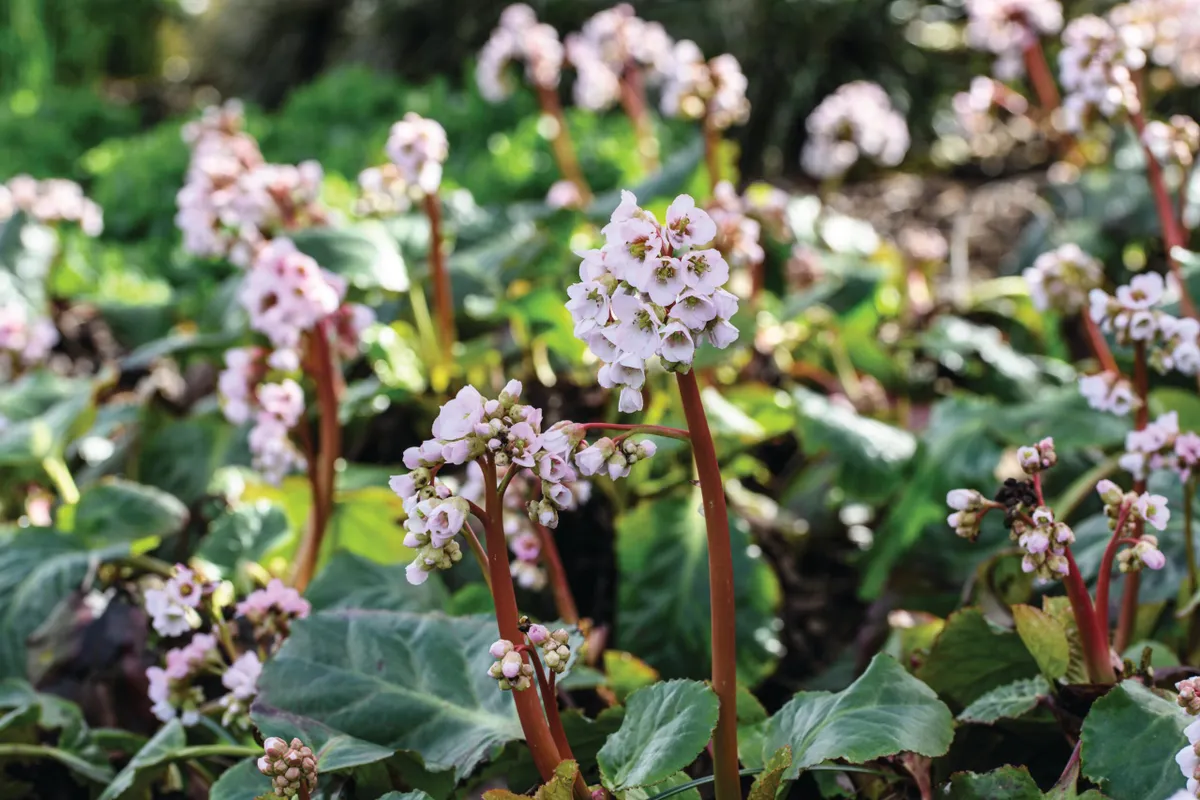
A popular cultivar with large white flowers that change to pale pink as they age. The tall, reddish flower stems reach over 40cm tall and hold the blooms well above the broad leaves. Height and spread: 50cm x 40cm. RHS H6, USDA 6b-7b.
Bergenia ‘Bressingham Ruby’

Great for winter foliage and spring flowers, this striking cultivar was raised at Bressingham Gardens and introduced in 1984. Deep red-magenta blooms rise above rounded leaves that turn purple in winter. 60cm x 30cm. RHS H5, USDA 4a-9b.
Bergenia crassifolia var. pacifica

This variety is found along the eastern coast of Russia where it survives freezing winter conditions. The flowers are among the earliest to appear and are a rich cyclamen pink. 35cm x 35cm. RHS H7.
Bergenia cordifolia ‘Purpurea’

A hardy species from Siberia that was introduced to cultivation in England in the 1760s. This cultivar has magenta-pink flowers above large, broadly ovate leaves that become purplish in winter. 60cm x 75cm.
Bergenia purpurascens
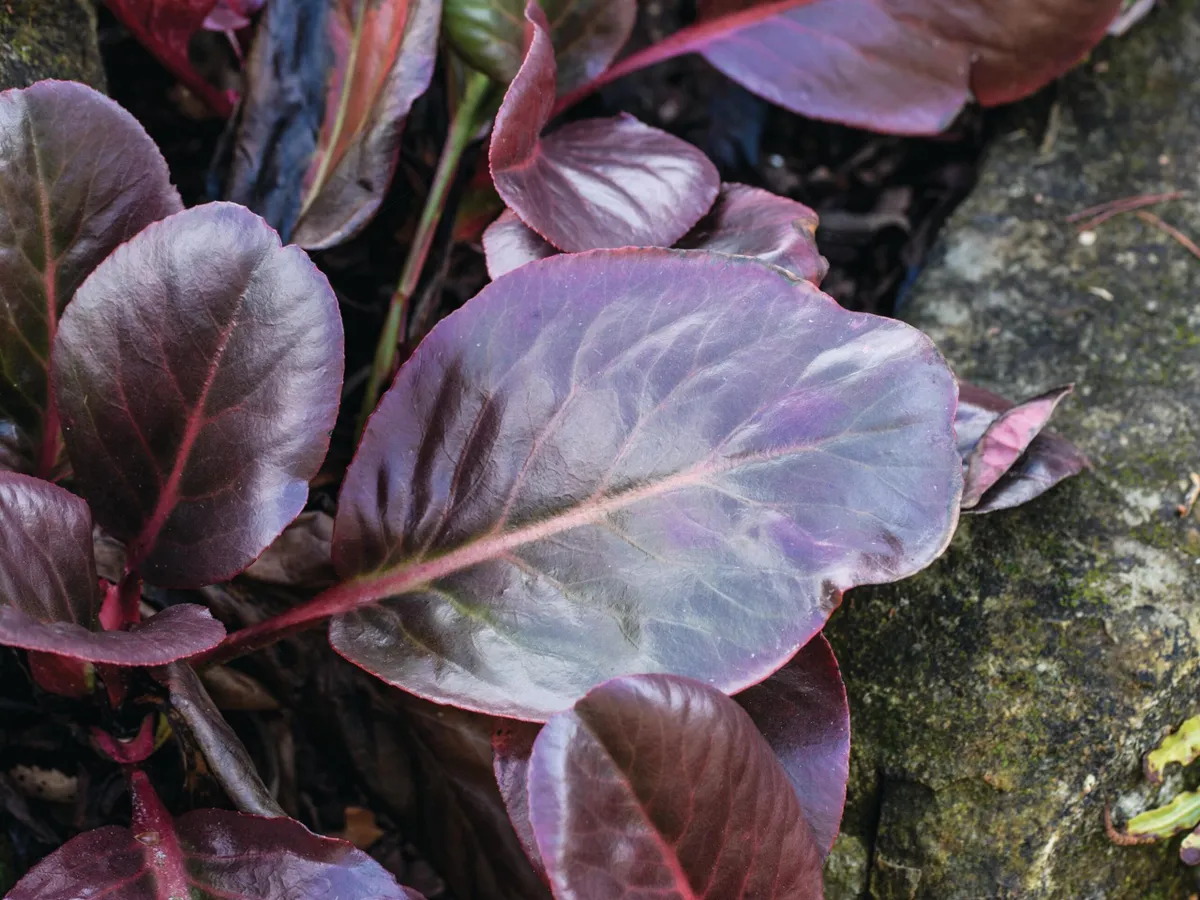
A Chinese clump-forming species that is grown primarily for its winter foliage. The oval-shaped leaves have a glossy surface and turn a deep reddish purple in winter, making it perfect for a winter garden. 30-40cm x 50cm. AGM. RHS H5.
Bergenia ‘Pink Dragonfly’

A compact form displaying bright, vivid pink flowers in early to mid spring. Noted for its neat, oval, deep-green leaves that turn deep purple-red in winter. Perfect for brightening up a shady spot. 30cm x 30cm.
Bergenia x schmidtii
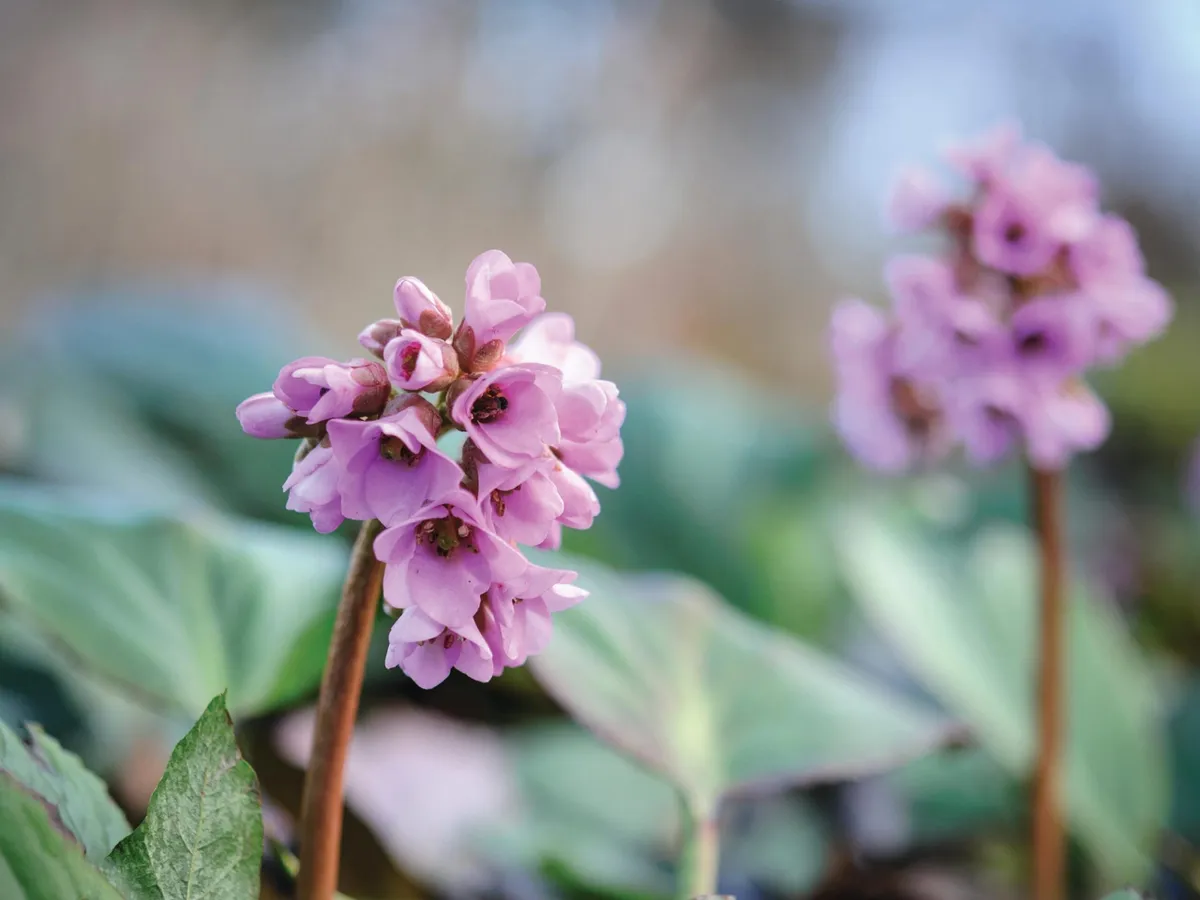
Probably the most common Bergenia in cultivation, this vigorous, leafy hybrid has pink flowers on a short stem. It is most likely responsible for bergenias’ poor reputation but has its uses for covering untended ground. 20-50cm x 50cm.
Bergenia ‘Bressingham White’
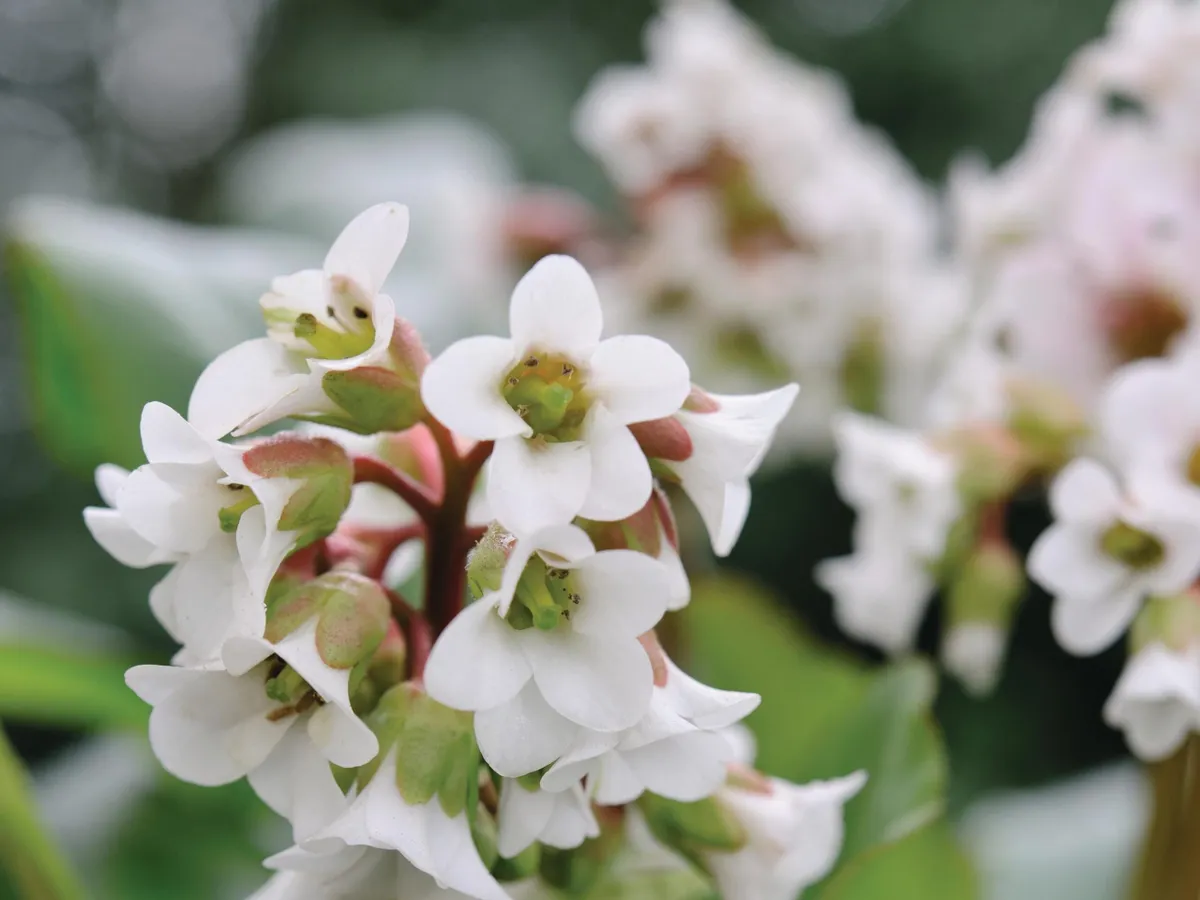
A free-flowering form. Its pure-white flowers, which become tinted with palest pink as they age, are held on red stems. Leaves remain green throughout winter. 30cm x 45cm. AGM. RHS H6, USDA 4a-9b.
Bergenia ‘Mrs Crawford’

Pure-white flowers with green calyces are held on green stems. Unlike most white forms, the flowers do not become pink as they age. The leaves are neat and turn reddish purple in winter. 30cm x 30cm. RHS H7.
Bergenia ciliata
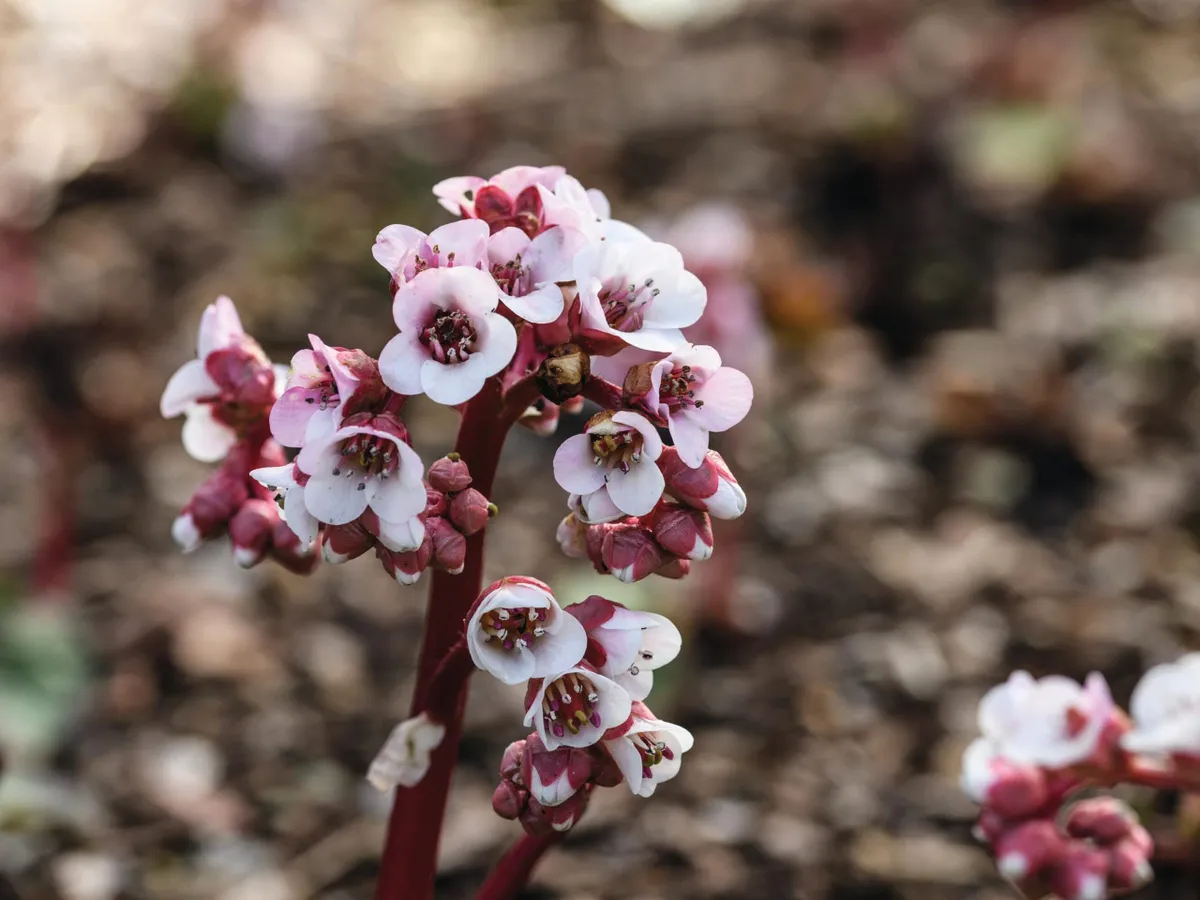
A small, variable, Himalayan species that grows to 30cm tall, with finely hairy, round leaves. The old leaves may be damaged by frost but as the pale-pink flowers appear, new leaves begin to grow. 30cm x 40cm.
Bergenia ‘Angel Kiss’
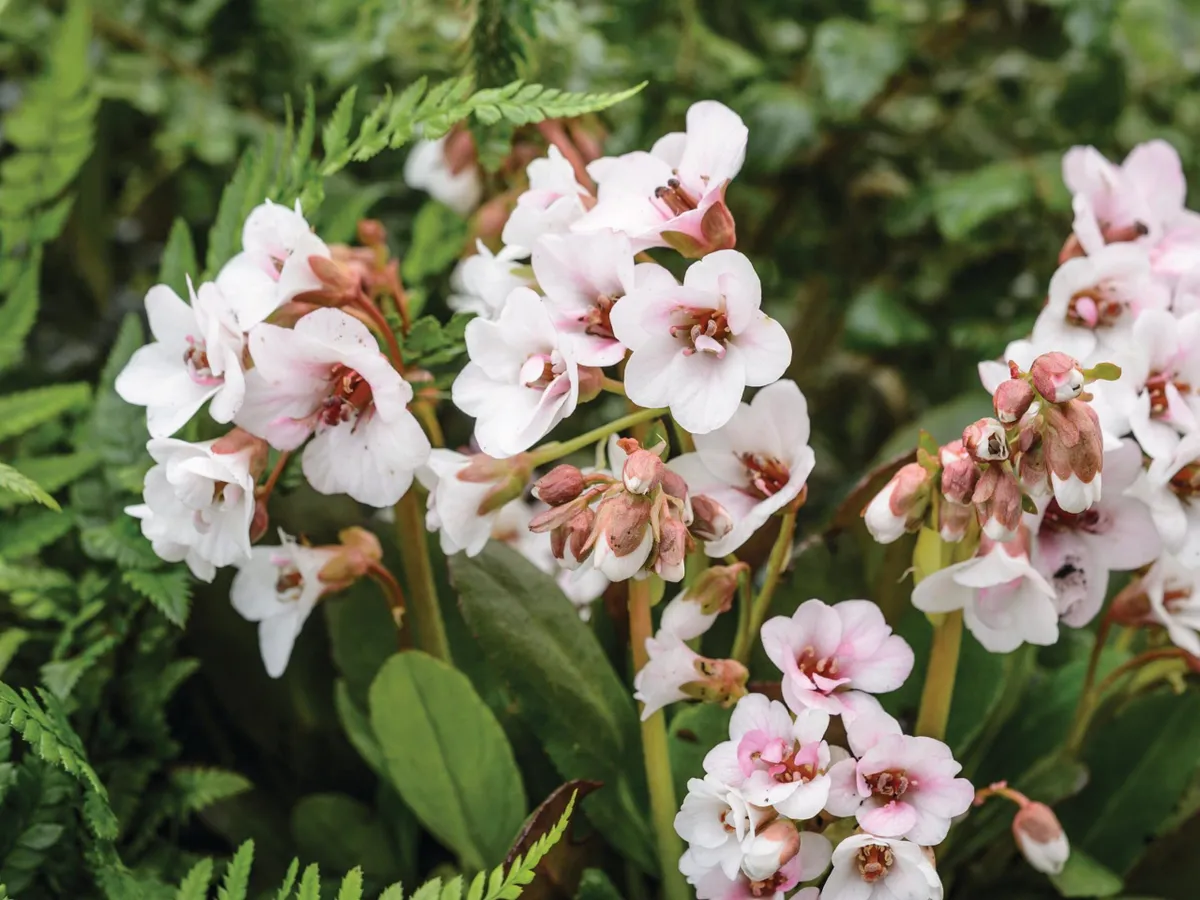
One of the Dragonfly Series, which is a range of compact, floriferous bergenias that are suitable for both for the border or for growing in containers. Its snow-white flowers age to pale pink. 25cm x 30cm.
Bergenia stracheyi
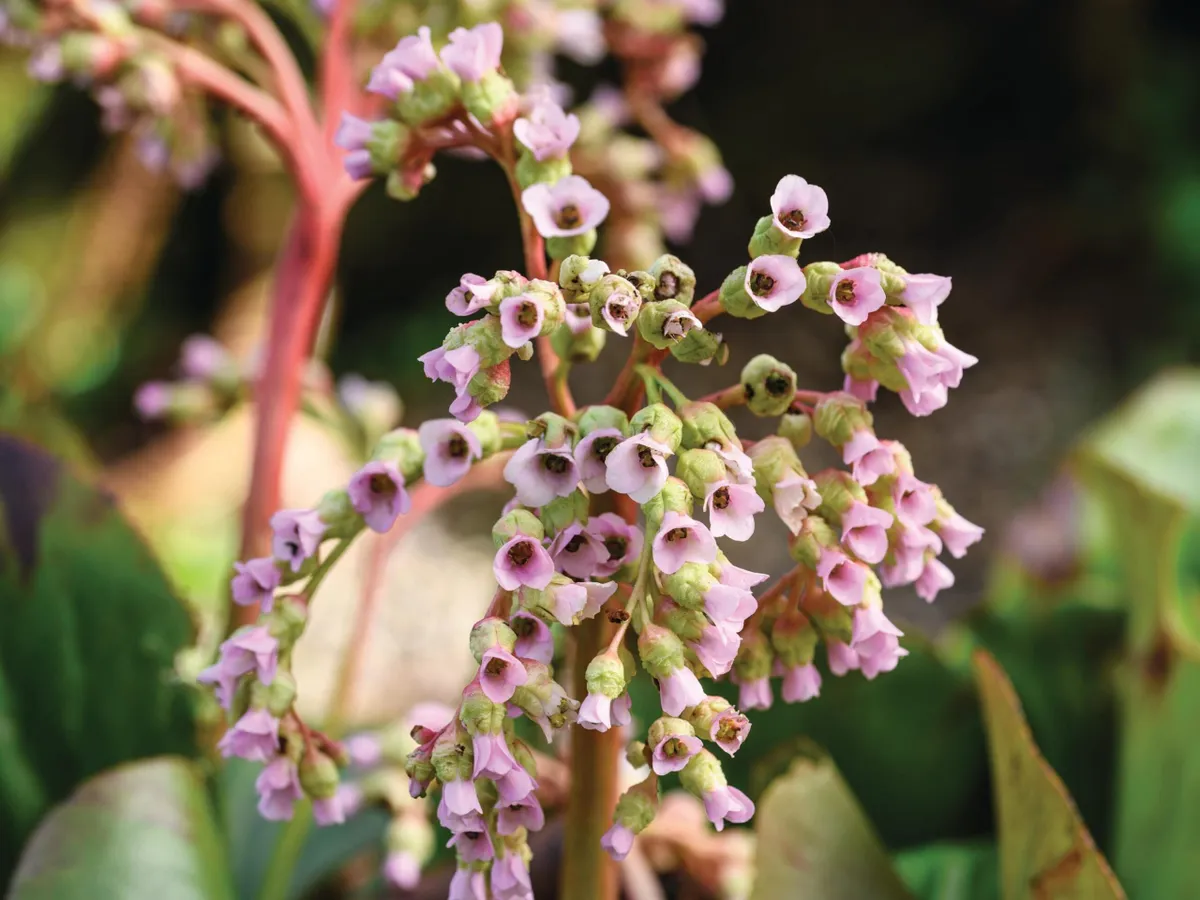
This thoroughly hardy species comes from high mountains in central Asia. The leaves have toothed margins but need tidying to keep this plant looking good. The flowers are pink, or white tinged with pink. 20cm x 30cm. RHS H6.
Bergenia emeiensis
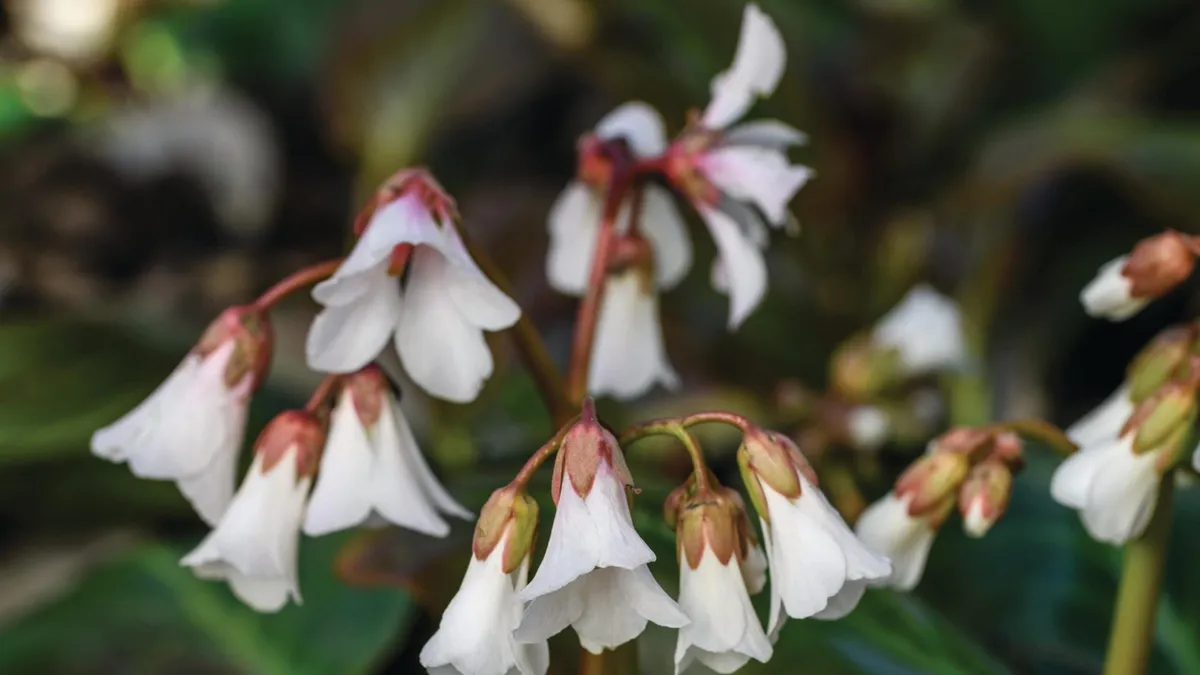
The loose panicles of this elegant species hold pure-white flowers that face downwards, above oval, dark-green leaves. Pink forms are also available. Although hardy, the leaves may be damaged by frost. 30cm x 30cm. RHS H7.
Where to see and buy Bergenia
• Ballyrobert Gardens 154 Ballyrobert Road, Ballyclare, Co. Antrim, BT39 9RT. Tel 028 9344 0101, ballyrobertgardens.com
• Beth Chatto’s Plants & Gardens Clacton Road, Elmstead Market, Elmstead, Colchester, Essex CO7 7DB.
Tel 01206 822007, bethchatto.co.uk
• The Bressingham Gardens Low Road, Diss, Norfolk IP22 2AA. Tel 01379 686900, thebressinghamgardens.com
• Claire Austin Hardy Plants White Hopton Farm, Wern Lane, Sarn, Newtown, Powys SY16 4EN. Tel 01686 670342, claireaustin-hardyplants.co.uk
• RHS Garden Rosemoor Great Torrington, Devon EX38 8PH. Tel 01805 62406, rhs.org.uk/gardens/rosemoor
• Royal Botanic Gardens, Kew Richmond, London TW9 3AE. Tel 020 8332 5655, kew.org